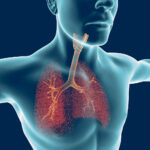INOpulse Reduces Pulmonary Blood Pressure in PH With Sarcoidosis

The use of the INOpulse combination drug-device therapy demonstrated a clinically meaningful reduction in pulmonary vascular resistance (PVR) — a measure of the internal resistance to blood flow within the lung arteries — in people with pulmonary hypertension (PH) associated with sarcoidosis (PH-Sarc).
That’s according to top-line data from a proof-of-concept study evaluating increasing doses of INOpulse among PH patients with the immune system disorder.
The Phase 2 clinical trial (NCT03727451) was sponsored by the device’s developer, Bellerophon Therapeutics. Given these positive findings, the company said it plans to design a multi-dose Phase 2b trial.
“We are pleased with the positive top-line data from this proof-of-concept study,” Naseem Amin, MD, chairman of Bellerophon’s board of directors, said in a press release. “Based on these results, Bellerophon is working with its steering committee, which is comprised of multiple pulmonary disease experts, to assess next steps for this program, including the design of a multi-dose Phase 2b study to assess the chronic benefit of iNO in PH-Sarc patients.”
Participants in the trial had been diagnosed with PH associated with sarcoidosis — characterized by an over-active immune system leading to the formation of clumps of inflammatory cells called granulomas in the pulmonary arteries and airways that increase blood pressure. There are no currently approved treatment options for PH-Sarc, a rare disease associated with significant symptoms and a high mortality rate.
“Sarcoidosis associated pulmonary hypertension has a median survival of approximately five years after development of the pulmonary hypertension,” said Robert Baughman, MD, a professor of medicine at the University of Cincinnati, in Ohio, and one of the study’s principal investigators.
INOpulse is designed to deliver an inhaled version of nitric oxide (NO), a vasodilator that reduces blood pressure by opening these blood vessels.
The study enrolled eight adults, ages 18 to 85, who had been on long-term oxygen therapy (minimum of four weeks). Four participants received escalating INOpulse doses of 30, 45, 75 micrograms/kg body weight (mcg/kg), and four were treated with 45, 75, 125 mcg/kg.
Across the used doses, all eight participants demonstrated a decrease in mean pulmonary arterial pressure (mPAP) and PVR.
At the 45 mcg/kg doses (iNO45), patients experienced a median PVR drop of 20% from before treatment, or the study’s baseline. A 20% or more PVR reduction is considered clinically meaningful.
The highest 125 mcg/kg dose showed a further PVR improvement, with a median reduction of 29%. That was a statistically significant difference from baseline, as well as from the preceding lower dose of 75 mcg/kg.
During the trial, doses were increased to 125 mcg/kg in seven of the eight participants. There were no declines in other blood flow (hemodynamic) measures or in pulmonary capillary wedge pressure — a measure of pressure on the left side of heart.
“I am encouraged by the positive changes observed in multiple hemodynamic parameters in patients with sarcoidosis associated pulmonary hypertension being treated with long-term oxygen therapy and then acutely treated with INOpulse,” Baughman said. “These clinically meaningful improvements in PVR started at the iNO45 dose and were well tolerated with no clinically relevant deterioration in pulmonary capillary wedge pressure or other hemodynamic parameters, even at the higher iNO doses.”
Treatment with INOpulse did not lead to treatment-emergent adverse events or serious side effects during the dose-escalation phase, reports show.
“The results from this cohort [group] of patients support further evaluation of the potential of iNO to treat PH-Sarc patients who are in urgent need of safe and effective therapies,” Baughman added.
The therapy also is being tested in the REBUILD (NCT03267108) Phase 3 clinical trial in patients, ages 18 to 80, on long-term oxygen. These participants have PH associated with pulmonary fibrosis, a disease caused by progressive scarring of lung tissue.
“We look forward to continuing our development program in PH-Sarc,” Amin said. “Bellerophon will continue to provide additional updates on our clinical activities in the coming year, including our ongoing Phase 3 program in fibrotic interstitial lung disease, the REBUILD study.”








